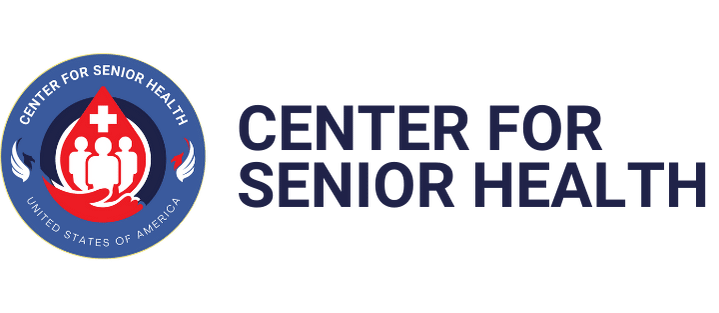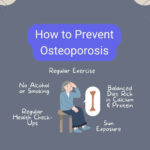Falls are a significant health risk for older adults, with one in four individuals aged 65 and above experiencing one each year. Falls prevention for elderly is important because they can result in serious injuries, including hip fractures, head traumas, and broken bones, leading to hospitalization, reduced mobility, and loss of independence. Falls can also have psychological consequences, which can cause a person to limit their activities and become socially isolated.
By taking falls preventative measures, elderly can reduce their risk and maintain their independence and overall health.

Key Takeaways
- Falls prevention for elderly can include regular exercise, reviewing medications with a healthcare provider, and making modifications to the home environment to reduce hazards.
- In the event of a fall, it is essential to know what to do and seek medical attention promptly.
Understanding Falls in Older Adults
Falls are a leading cause of injury and death among older adults. In fact, emergency departments recorded 3 million visits for older adult falls in 2020 alone.
As individuals age, their risk of falling increases due to natural changes in the body such as decreased balance, muscle weakness, and vision changes. Additionally, certain medications can increase the risk. However, falls are not an inevitable part of aging and there are steps that can be taken to prevent them.
Risk Factors
There are several risk factors that increase the likelihood of falls. These risk factors can be broadly classified into two categories: physical factors and environmental factors.
Physical Factors
Physical factors that increase the risk of falls in elderly include age-related changes in balance and gait, chronic health conditions, and side effects of medications. As people age, they experience changes in their body that can affect their balance and coordination. These changes can make it more difficult to maintain balance.
Chronic health conditions such as arthritis, Parkinson’s disease, and vision disorders can also increase the risk. Medications used to treat these conditions can have side effects that affect balance and coordination.
Older adults who engage in certain activities, such as climbing ladders or standing on chairs, are also at increased risk.
Dizziness, tripping, foot problems, and pain can also increase the risk.
Orthostatic hypotension, a condition in which blood pressure drops suddenly when a person stands up, can also increase the risk.
Environmental Factors
Environmental factors include hazards in the home and community. Hazards in the home include loose rugs, cluttered walkways, poor lighting, and slippery floors. Hazards in the community include uneven sidewalks, poorly maintained streets, and inadequate lighting.
Consequences of Falls
Falls in elderly individuals can have significant consequences, including injuries, fractures, disability, hospitalization, and even death. According to the Centers for Disease Control and Prevention (CDC), falls are the leading cause of fatal and non-fatal injuries among older adults in the United States.
Injury is the most common consequence. They can be minor injuries such as bruises and abrasions, but they can also lead to more severe injuries such as broken bones. Fractures are a common consequence, with hip fractures being the most serious. Hip fractures often require hospitalization and can result in long-term disability, which can be costly.
Disability is another consequence resulting in functional limitations that affect an individual’s ability to perform daily activities. These limitations can lead to a loss of independence and a decreased quality of life.
Deaths can also occur as a result. In 2019, there were over 39,000 fall-related deaths among elderly in the United States.
Preventing Falls in Elderly
Falls prevention for elderly is possible, and there are many things that older adults can do to reduce their risk. Here are some steps to help prevent a fall.
Physical Activity and Exercise
Physical activity and exercise are important for maintaining good health. Exercise can improve balance, strength, and flexibility, which can help reduce the risk of falls. Tai chi, yoga, and other balance exercises can be especially helpful in improving balance. Older adults should also engage in regular gait, balance, and strength training exercises to improve their overall physical function. Read our guide on senior exercises at home.
Home Safety and Modification
Home hazards are a major cause of falls in older adults. Elderly should make sure their homes are safe and free of hazards. This can include removing clutter, ensuring proper lighting, and installing grab bars in the bathroom. Older adults should also consider modifying their homes to make them safer, such as installing handrails on stairs and adding non-slip mats to the shower or bathtub. Read our full guide on home safety for elderly.
Medical Management
Medical conditions and medications can also contribute to falls in older adults. Older adults should work with their healthcare provider to manage any medical conditions they have and to ensure that their medications are not causing any balance problems. It is also important for older adults to get regular vision and hearing tests to ensure that they can see and hear well enough to prevent falls.
Regular Check-ups
Regular check-ups allow a health care provider to assess the patient’s overall health and identify any underlying conditions that make falling more likely.
One important aspect of regular check-ups is assessing vision and hearing. Poor vision and hearing can significantly increase the risk of falls, as it can affect the individual’s balance and spatial awareness. Healthcare professionals can identify any issues with vision and hearing and recommend corrective measures such as glasses or hearing aids.
Another important aspect of regular check-ups is monitoring blood pressure. High blood pressure can cause dizziness or lightheadedness. Healthcare professionals can monitor blood pressure and recommend lifestyle changes or medication to manage it.
Osteoporosis is another condition that can increase the risk. Regular check-ups can help identify this condition and allow healthcare professionals to recommend measures to prevent falls, such as exercise and calcium and vitamin D supplements.
Speaking of vitamin D, regular check-ups can also help identify any deficiencies in this vitamin. Vitamin D is essential for maintaining strong bones and muscles. Healthcare professionals can recommend supplements or dietary changes to address this deficiency.
Other Tips to Prevent Falls
In addition to physical activity, home safety, and medical management, there are other things that elderly can do to prevent falls.
These include:
- Wearing sturdy shoes with non-slip soles
- Using an assistive device, such as a cane or walker, if needed
- Sitting down on a sturdy chair to put on shoes or socks
- Getting enough sleep
- Limiting alcohol
- Getting up slowly to avoid quick changes in blood pressure
By taking these steps, older adults can reduce their risk and stay safe and healthy.
What to do when you fall
Falls can happen to anyone, even the most cautious and healthy individuals. When it happens, it is important to remain calm and take the necessary steps to prevent further injury. Here are some steps to follow if you or someone you know falls:
- Remain calm: After a fall, it’s natural to feel scared or anxious. However, it’s important to remain calm and assess the situation.
- Get up slowly: If you feel able to get up, do so slowly and carefully. It’s important to take your time and not rush the process.
- Crawl to a sturdy chair if needed: If you are unable to get up, crawl to a sturdy chair or piece of furniture to help you stand up. Make sure the chair or furniture is stable and won’t tip over.
- Get help: If you are unable to get up or feel unsteady, call out for help. If you are alone, try to reach a phone or other device to call for help.
- Call 911: If you or the person who fell is injured or unable to get up, call 911. Emergency responders can assess the situation and provide medical attention if necessary.
- Emergency response systems: Consider investing in an emergency response system, such as a medical alert bracelet or pendant. These systems can be worn at all times and can be activated in case of an emergency.
Summary
Preventative measures can include regular exercise to improve balance and strength, medication management to reduce the risk of side effects, and home modifications to reduce hazards such as loose rugs or poor lighting. It is also important to have regular check-ups with healthcare providers to assess and address any potential risk factors.
Frequently Asked Questions
What are some devices that can help prevent falls?
There are several devices that can help, such as grab bars, handrails, non-slip mats, raised toilet seats, shower chairs, and walkers. Grab bars and handrails can provide support and stability in areas such as the bathroom and stairways. Non-slip mats can help prevent slips on wet surfaces. Raised toilet seats can make it easier to get on and off the toilet. Shower chairs can provide a safe and stable place to sit while showering. Walkers can provide support and stability while walking, particularly for those with balance or mobility issues.
What are the 4 P’s of fall prevention for elderly and how can they be implemented?
The 4 P’s are: Plan, Prepare, Protect, and Participate. Planning involves identifying potential hazards and taking steps to address them. This may include home safety assessments, medication management, and exercise programs. Preparation involves ensuring that the individual is physically and mentally prepared to prevent falls. This may include regular health check-ups, vision correction, and the use of assistive devices. Protection involves taking steps to protect the individual from falls, such as the use of grab bars and handrails, non-slip mats, and walkers. Participation involves encouraging the individual to take an active role in prevention, such as by participating in exercise programs and reporting any near falls to their healthcare provider.
References
https://www.cdc.gov/falls/index.html
- How To Improve Gut Microbiome – 26 May 2024
- Chemo neuropathy treatment: What to do? – 19 May 2024
- How to Prevent Osteoporosis: Effective Strategies & Simple Steps – 28 December 2023





